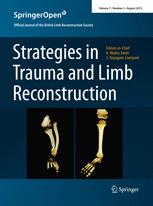
Intertrochanteric fracture: Cephalomedullary nail is no different from sliding hip screw

Intertrochanteric fracture: Cephalomedullary nail is no different from sliding hip screw
Dual lag screw cephalomedullary nail versus the classic sliding hip screw for the stabilization of intertrochanteric fractures. A prospective randomized study
Strategies Trauma Limb Reconstr. 2012 Nov;7(3):155-62. doi: 10.1007/s11751-012-0146-3. Epub 2012 Oct 20Did you know you're eligible to earn 0.5 CME credits for reading this report? Click Here
Synopsis
165 patients with low-energy intertrochanteric fractures were randomized to receive treatment using the extramedullary sliding hip screw or the dual lag screw cephalomedullary nail. Over a mean follow up of 36 months, there were no differences between the two groups for functional recovery, intra-operative outcomes, length of hospital stay, delay to surgery, re-operation rate, mortality, complicat...
To view the full content, login to your account,
or start your 30-day FREE Trial today.
FREE TRIAL
LOGIN
Forgot Password?
Explore some of our unlocked ACE Reports below!

Learn about our AI Driven
High Impact Search Feature
Our AI driven High Impact metric calculates the impact an article will have by considering both the publishing journal and the content of the article itself. Built using the latest advances in natural language processing, OE High Impact predicts an article’s future number of citations better than impact factor alone.
Continue



 LOGIN
LOGIN

Join the Conversation
Please Login or Join to leave comments.